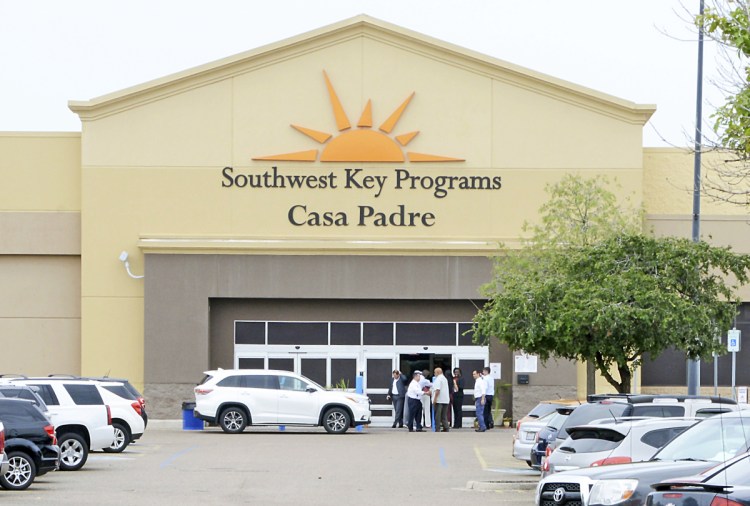When San Benito, Texas, school leaders learned of an influx of children to a migrant shelter in their small town near the U.S.-Mexico border, they felt obliged to help.
The superintendent reached out and agreed to send 19 bilingual teachers, mobile classrooms and hundreds of computers to make the learning environment resemble one of his schools.
While a government contractor bears responsibility for educating children at the highly guarded center, local officials say they stepped up partly because of a law that calls on school systems to educate any child, anywhere within their district.
“This is not a political issue. This is not a racial issue. This is a moral obligation, and actually our legal obligation,” said Michael Vargas, who leads the board of the San Benito Consolidated Independent School District.
San Benito is one of a small number of U.S. school systems that are preparing for the first day of school on both their public campuses and in new classrooms set up at nearby federal youth migrant shelters. In neighboring Brownsville, Texas, the superintendent is working on an agreement to deploy teachers and services to help educate 800 children housed in federal facilities in her district.
The school systems are pitching in amid an outcry over the separation of children from their parents at the U.S.-Mexico border under the Trump administration’s zero-tolerance policy for illegal immigration. Several hundred children remain separated from their parents, but most of the thousands of young people held in federal shelters across the U.S. are unaccompanied minors who arrived in the country without their families.
The Associated Press inquired with public school districts in 61 cities nationwide where shelters are known to exist within their boundaries. Among the 50 that responded, most said they had no contact with the shelter or federal program authorities. Some outside the border states, including Camden, New Jersey, said they only recently discovered the existence of migrant shelters in their community.
Many noted they would educate all children regardless of immigration status, as required by law, if their families or legal guardians sought enrollment on their campuses.
“Until this becomes a real-time issue for us, we have no official position,” said Superintendent Dennis Blauser of the Oracle, Arizona, school district.
In Texas, some districts already had longstanding agreements to run classrooms with public school teachers at migrant shelters.
By law, the federal contractors that operate the shelters are required to have a “care provider” give children six hours a day of structured learning time.
Southwest Key, the largest contractor operating such facilities, has agreements with two school districts, including San Benito. It is also working to create partnerships with the Brownsville Independent School District and with a charter school network run separately by Southwest Key’s parent organization.
Salvador Cavazos, Southwest Key’s vice president of educational services, said the nonprofit shelter operator has for years offered great basic services but is now welcoming more help from outside school systems as an enhancement as the number of children in its care grows.
He said Southwest Key gets appreciative feedback from families after the average 30- to 45-day stay for each child, and most students leave with some level of academic gain.
Send questions/comments to the editors.



Success. Please wait for the page to reload. If the page does not reload within 5 seconds, please refresh the page.
Enter your email and password to access comments.
Hi, to comment on stories you must . This profile is in addition to your subscription and website login.
Already have a commenting profile? .
Invalid username/password.
Please check your email to confirm and complete your registration.
Only subscribers are eligible to post comments. Please subscribe or login first for digital access. Here’s why.
Use the form below to reset your password. When you've submitted your account email, we will send an email with a reset code.